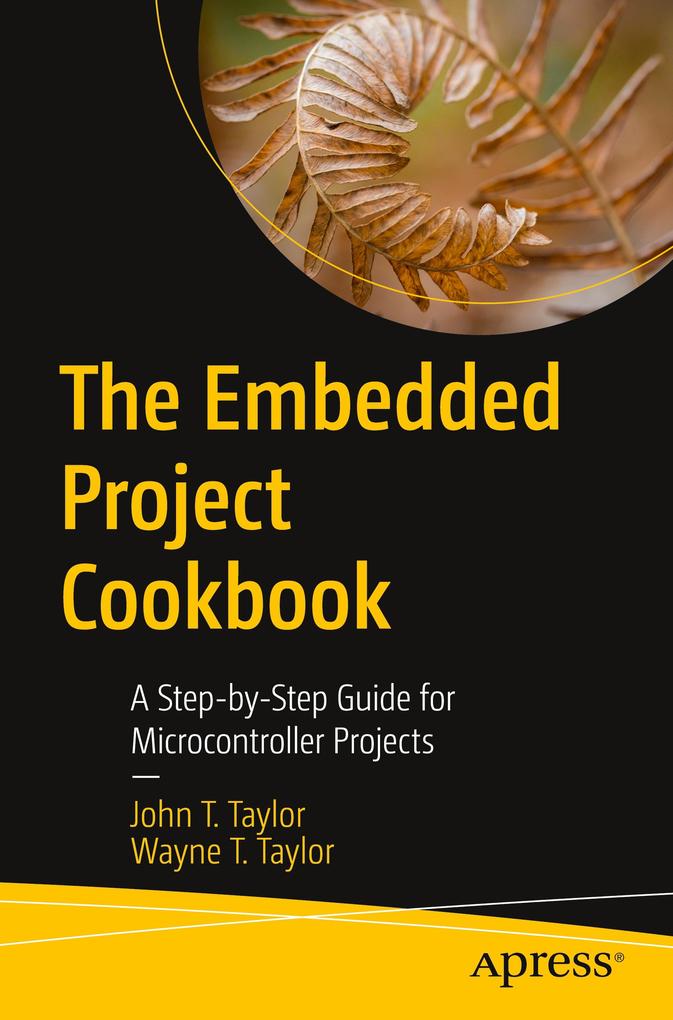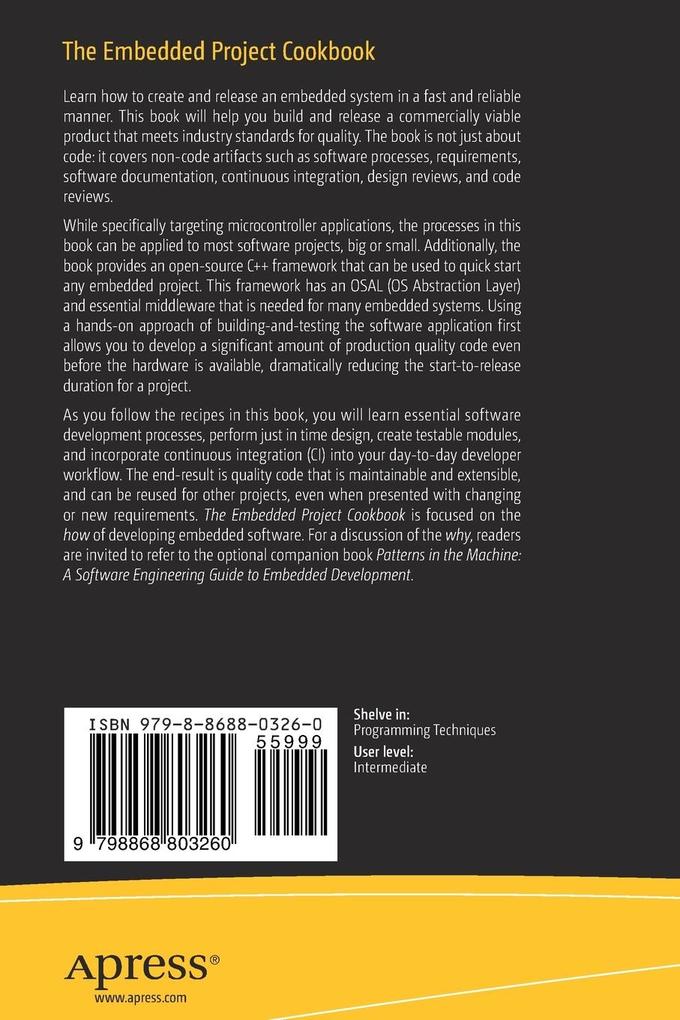
Zustellung: Do, 22.05. - Sa, 24.05.
Versand in 2 Tagen
VersandkostenfreiBestellen & in Filiale abholen:
Learn how to create and release an embedded system in a fast and reliable manner. This book will help you build and release a commercially viable product that meets industry standards for quality. The book is not just about code: it covers non-code artifacts such as software processes, requirements, software documentation, continuous integration, design reviews, and code reviews.
While specifically targeting microcontroller applications, the processes in this book can be applied to most software projects, big or small. Additionally, the book provides an open-source C++ framework that can be used to quick start any embedded project. This framework has an OSAL (OS Abstraction Layer) and essential middleware that is needed for many embedded systems. Using a hands-on approach of building-and-testing the software application first allows you to develop a significant amount of production quality code even before the hardware is available, dramatically reducing the start-to-release duration for a project.
As you follow the recipes in this book, you will learn essential software development processes, perform just in time design, create testable modules, and incorporate continuous integration (CI) into your day-to-day developer workflow. The end-result is quality code that is maintainable and extensible, and can be reused for other projects, even when presented with changing or new requirements.
The Embedded Project Cookbook is focused on the how of developing embedded software. For a discussion of the why, readers are invited to refer to the optional companion book Patterns in the Machine: A Software Engineering Guide to Embedded Development.
What You Will Learn
- Separate software architecture from software design
- Write software documents that are intrinsically resistant to going out-of-date.
- Identify the processes, workflows, and best practices for the team to follow.
- Initiate code reviews before code is checked intoa stable branch.
- Design testable modules and implement automated unit testing that doesn't require hardware.
- Incorporate continuous integration into the day-to-day developer workflow, including automated integration testing.
- Create a code base that can be reused on other projects.
Who This Book Is For
Mid-level developers and software leads who are looking to get up and running without all the underlying theories. This book is also for professionals looking to learn how to productize a concept or technology and sell the results to a customer.
Inhaltsverzeichnis
Chapter 1: Introduction. - Chapter 2: Requirements. - Chapter 3: Analysis. - Chapter 4: Software Development Plan. - Chapter 5: Preparation. - Chapter 6: Foundation. - Chapter 7: Building Applications with the Main Pattern. - Chapter 8: Continuous Integration Builds. - Chapter 9: Requirements Revisited. - Chapter 10: Tasks. - Chapter 11: Just in Time Detailed Design. - Chapter 12: Coding, Unit Tests, and Pull Requests. - Chapter 13: Integration Testing. - Chapter 14: Broad Support Package. - Chapter 15: Drivers. - Chapter 16: Release. - Appendix A: Getting started with the Source Code. - Appendix B: Running the Example Code. - Appendix C: Introduction to the Data Model Architecture. - Appendix D: LHeader and LConfig Patterns. - Appendix E: CPL C++ framework. - Appendix F: LHeader and LConfig Patterns. - Appendix G: Ratt. - Appendix H: GM6000 Requirements. - Appendix I: GM6000 System Architecture. - Appendix J: GM6000 Software Architecture. - Appendix K: GM6000 Software Development Plan. - Appendix L: GM6000 Software Detailed Design. - Appendix M: GM6000 Software Detailed Design. - Appendix N: GM6000 Fuzzy Logic Temperature Control. - Appendix O: Software C/C++ Embedded Coding Standard. - Appendix P: GM6000 Software Requirements Trace Matrix. - Appendix Q: GM6000 Software Bill of Materials. - Appendix R: GM6000 Software Release Notes.
Produktdetails
Erscheinungsdatum
08. Oktober 2024
Sprache
englisch
Auflage
First Edition
Seitenanzahl
704
Autor/Autorin
Wayne T. Taylor, John T. Taylor
Verlag/Hersteller
Produktart
kartoniert
Abbildungen
XVIII, 684 p. 87 illus.
Gewicht
1048 g
Größe (L/B/H)
235/155/38 mm
ISBN
9798868803260
Entdecken Sie mehr
Bewertungen
0 Bewertungen
Es wurden noch keine Bewertungen abgegeben. Schreiben Sie die erste Bewertung zu "The Embedded Project Cookbook" und helfen Sie damit anderen bei der Kaufentscheidung.











